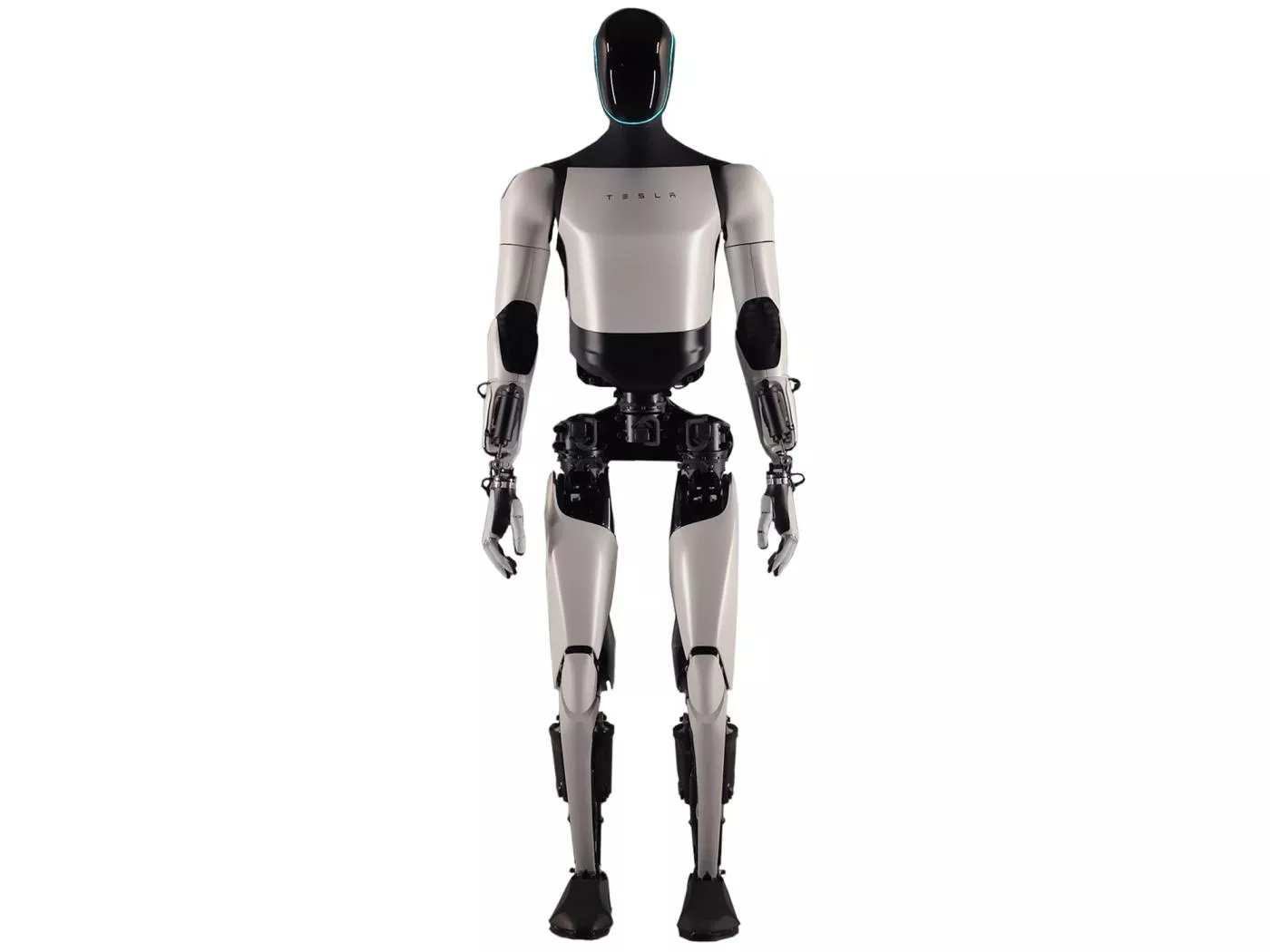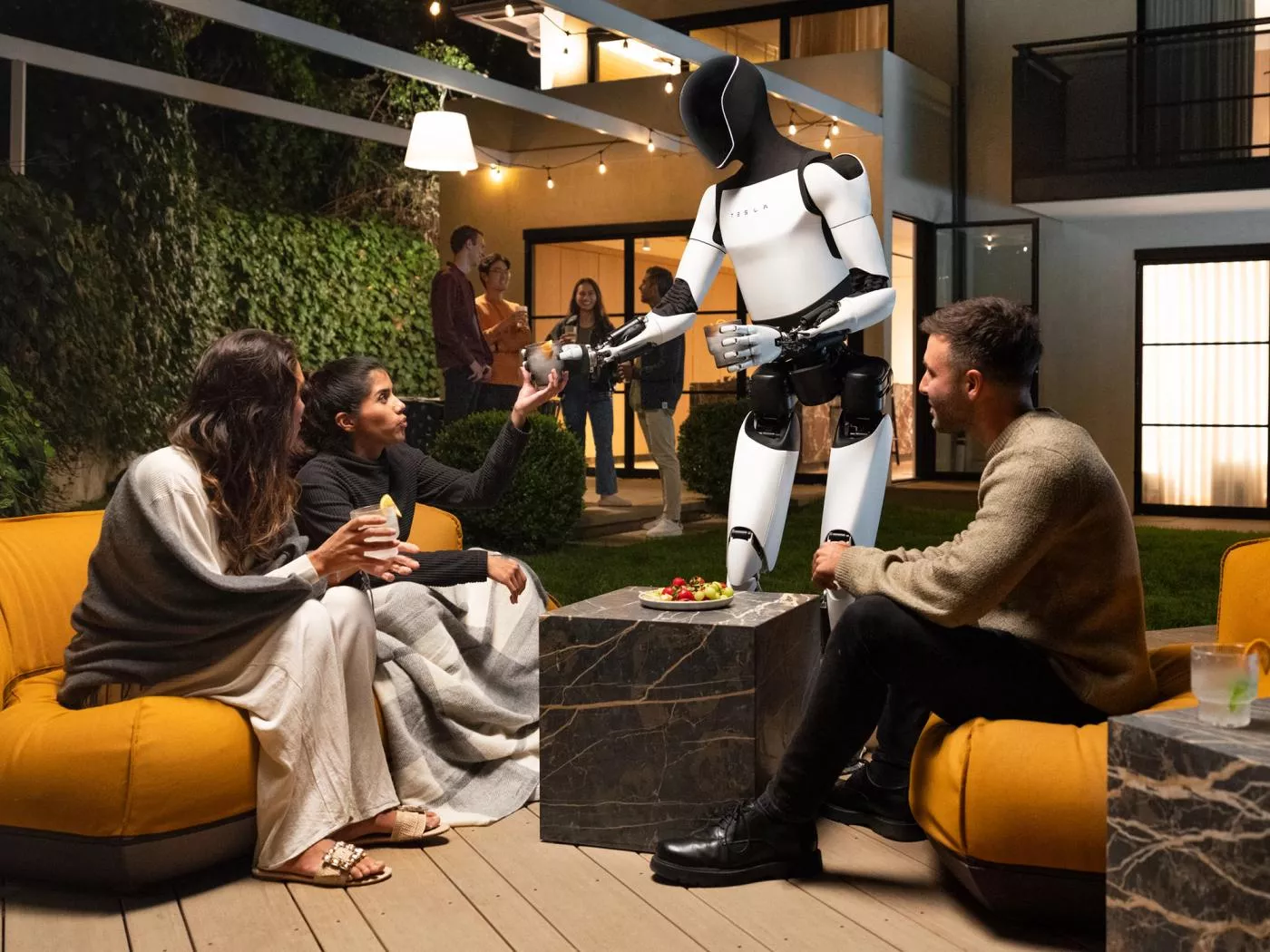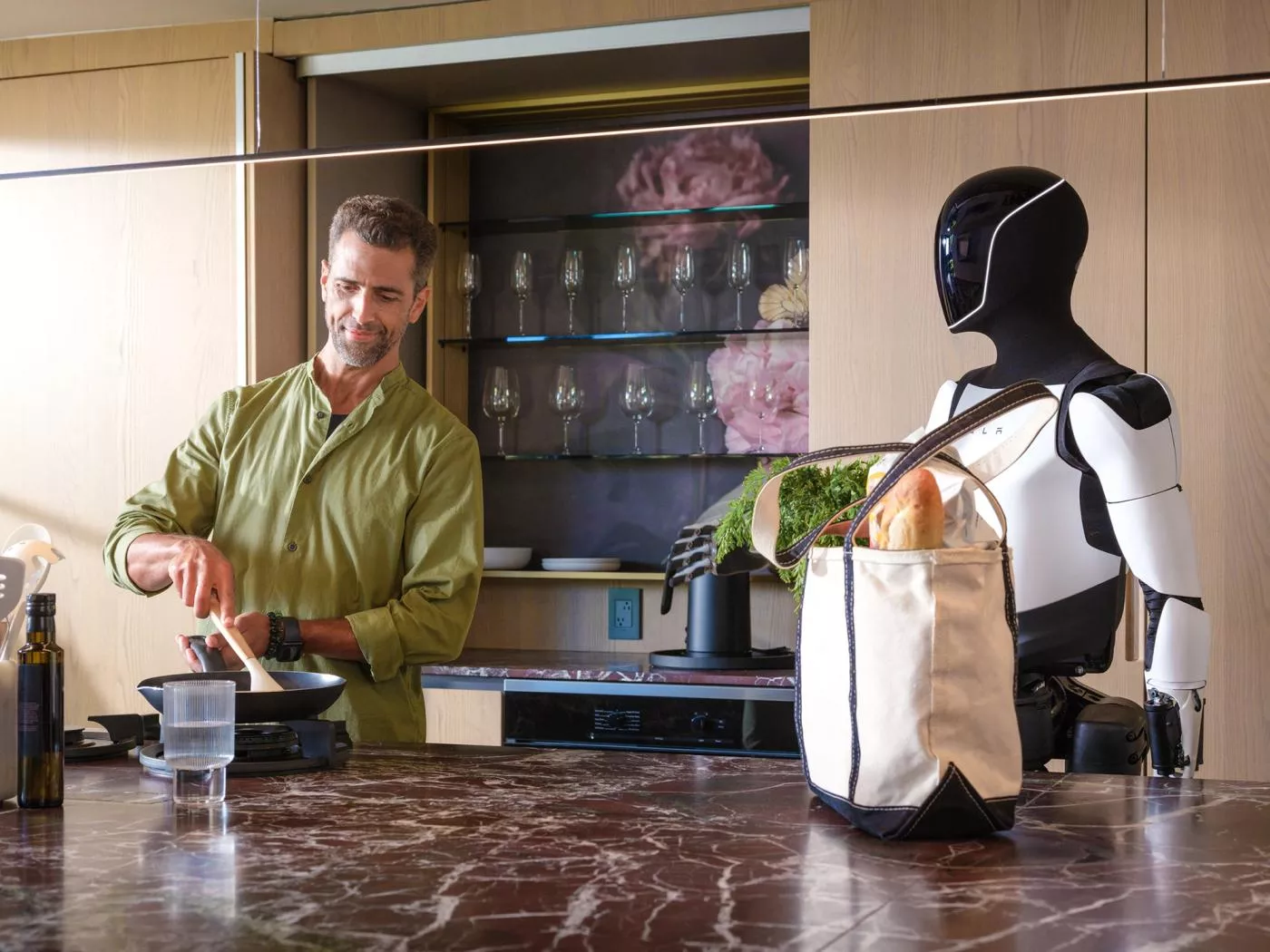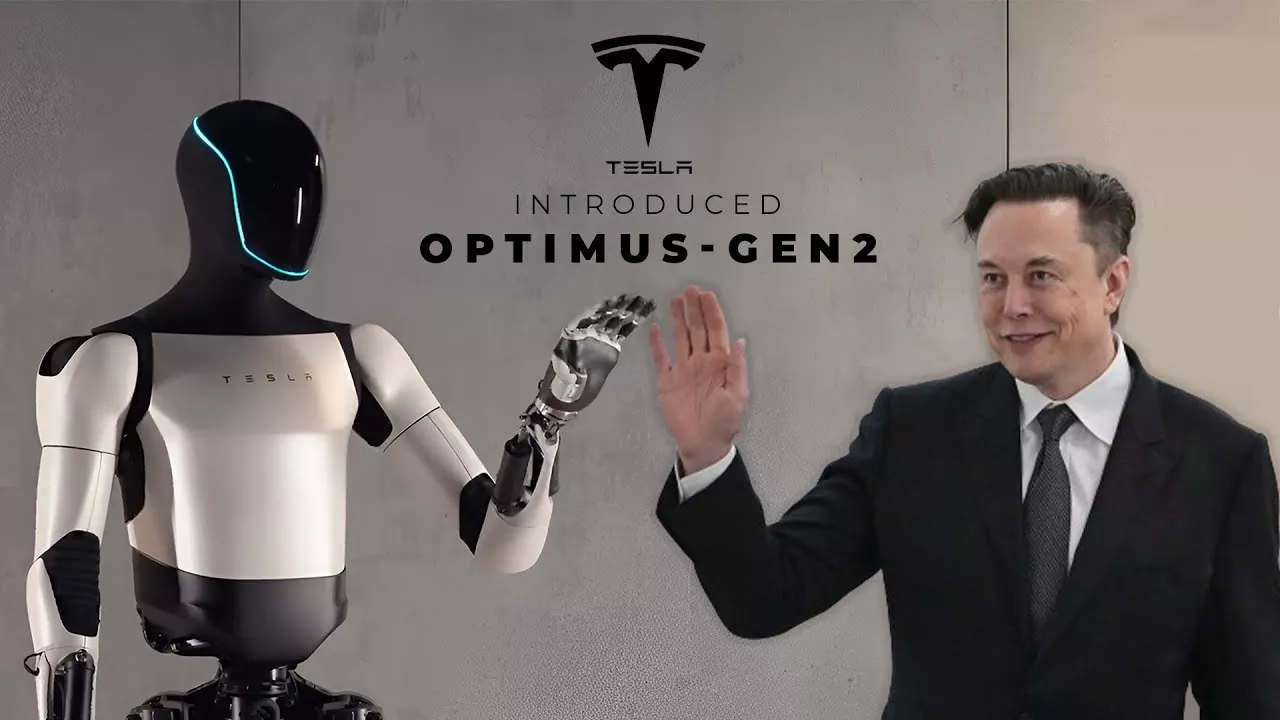Tesla Optimus Humanoid Robot: Product Overview
Technical Specifications
| Specification | Value |
|---|---|
| Model | Optimus (also known as Tesla Bot), Generation 2 (latest public prototype) |
| Dimensions (Height) | Approx. 5' 8" (173 cm) |
| Weight | Approx. 125 lbs (57 kg) |
| Payload (Carrying) | 45 lbs (20 kg) |
| Speed (Walking) | 5 mph (approx. 2.24 m/s) |
| Sensors | Tesla Vision (Cameras), Force & Tactile Sensing (Hands), Joint Position/Torque Sensors |
| Compute | Tesla-designed SoC, leveraging FSD Hardware |
| Software | AI based on Tesla's vehicle Autopilot/FSD, Neural Networks for navigation & manipulation |
| Power | Electric, 2.3 kWh custom Tesla battery pack (integrated in torso) |
| Actuators | Custom Tesla-designed rotary and linear actuators |
| Degrees of Freedom (DoF) | Total: 40+ (Body: 28 structural DoF); Hands: 11 DoF each (Gen 2) |
| Other Specs | Lightweight materials, Human-like hands (Gen 2), Bi-pedal locomotion |
Key Features & Benefits
- AI-Powered Autonomy: Leverages Tesla's extensive experience in AI, computer vision, and neural networks developed for its Full Self-Driving (FSD) system, adapted for bipedal locomotion and manipulation.
- Humanoid Form Factor: Designed to operate in environments built for humans, enabling it to perform a wide range of tasks without requiring specialized infrastructure.
- Advanced Manipulation: Generation 2 features human-like hands with 11 DoF each, equipped with tactile sensors, allowing for delicate and precise object handling (e.g., handling eggs).
- Integrated Tesla Technology: Utilizes custom Tesla-designed actuators, batteries, power electronics, and compute hardware, potentially benefiting from automotive scale and efficiency.
- Real-World Navigation: Designed to perceive its surroundings, plan paths, and navigate complex, unstructured environments autonomously.
- Learning Capability: AI systems are designed to learn from data and experience, continuously improving performance and adapting to new tasks and environments.
- Potential for Mass Production: Aims to leverage Tesla's manufacturing expertise to produce Optimus at scale and potentially at a significantly lower cost than competitors.
Target Applications
Optimus is envisioned as a general-purpose humanoid robot capable of taking over tasks that are unsafe, repetitive, or boring for humans across various sectors.
- Manufacturing: Performing assembly line tasks, material transport, quality inspection, and other repetitive factory jobs (intended initial use within Tesla factories).
- Logistics and Warehousing: Handling tasks like sorting, packing, loading/unloading, and general material movement.
- Hazardous Environments: Operating in conditions unsafe for human workers, such as handling hazardous materials or working in extreme temperatures.
- Home Assistance (Future Vision): Assisting with household chores (cleaning, organizing, groceries), providing eldercare support, and acting as a companion.
- General Labor: Aimed at addressing labor shortages by filling roles requiring manual dexterity and mobility.
Use Cases & Scenarios
While still under development, demonstrated and envisioned use cases include:
- Factory Automation: Walking autonomously through factory floors, identifying and picking up objects, carrying items (like battery cells), and potentially operating machinery.
- Object Sorting: Demonstrated ability to sort objects (like colored blocks) using vision and manipulation.
- Delicate Manipulation: Showcased handling fragile items like eggs (Gen 2).
- Basic Locomotion: Walking, squatting, balancing on one leg (yoga pose demonstrated).
- Human-Robot Interaction (Future): Potential for collaborative tasks, following instructions, and interacting socially (though current public demos often involve teleoperation for complex interactions).
Unique Selling Points
- Leverages Tesla's AI Prowess: Built upon the foundation of Tesla's world-leading real-world AI development for autonomous vehicles.
- Vertical Integration: Utilizes Tesla's custom-designed actuators, batteries, and compute hardware, potentially enabling cost efficiencies and performance advantages.
- Mass Production Capability: Aims to achieve unprecedented scale and affordability in humanoid robot production, leveraging Tesla's manufacturing experience.
- General-Purpose Vision: Designed to be adaptable to a wide array of tasks rather than being single-purpose, increasing potential utility.
- Strong Brand & Visionary Leadership: Backed by Elon Musk's ambitious vision and Tesla's global brand recognition, driving significant public interest and investment.
Industries Utilized
Currently being tested and developed primarily for Tesla's own use in:
- Manufacturing (Automotive) Potential future industries include:
- Logistics & Warehousing
- Retail
- Healthcare / Eldercare
- Domestic / Consumer households
Competitive Advantages
- Advanced Real-World AI: Potential advantage derived from the vast amounts of data and learning from Tesla's vehicle fleet.
- Economies of Scale: If mass production is achieved, Tesla could offer Optimus at a disruptive price point.
- Hardware Synergies: Uses shared components (batteries, actuators, compute) with Tesla vehicles, potentially reducing costs and speeding up development.
- End-to-End System: Development includes hardware, software, AI, and manufacturing under one roof.
More Information
Tesla Bot, or Optimus, represents Tesla's expansion beyond electric vehicles and energy into general-purpose robotics. Unveiled conceptually in 2021 and prototyped in 2022, the project aims to create a humanoid robot capable of performing a vast range of tasks currently done by humans. It heavily relies on Tesla's FSD computer and AI expertise, essentially being described as an "AI robot on legs" rather than wheels. The development focuses on creating custom actuators and utilizing lightweight materials. While demonstrations have shown increasing capabilities (walking, sorting, delicate manipulation with Gen 2), many complex tasks shown in promotional videos still rely significantly on human teleoperation, a point often criticized for lack of transparency. Elon Musk envisions Optimus becoming more significant than Tesla's car business, eventually being affordable (estimated $20k-$30k) and ubiquitous in both industrial and domestic settings, acting as a worker, assistant, and companion.
Other Robots of Tesla, Inc.
- Tesla's primary focus is on its electric vehicles (Model S, 3, X, Y, Cybertruck, Semi), which utilize sophisticated robotics in their manufacturing and incorporate advanced AI for Autopilot and Full Self-Driving features. Optimus shares core AI and hardware components with these vehicles.
Pricing and Availability
- Pricing: Not commercially available. Elon Musk has estimated a potential future price of $20,000 - $30,000 upon achieving mass production, aiming to be "less than a car."
- Availability: Limited production planned for internal use in Tesla factories starting in 2025, with potential sales to other companies beginning in 2026 (Timelines subject to change).
- Brochure: N/A
- Demo Request: N/A
- Technical Whitepaper: N/A (Information primarily released via AI Day events, social media, and investor calls).
Competitor Products (to Optimus)
The humanoid robotics field is rapidly expanding. Key competitors include:
- Figure 01 / Figure 02 (Figure AI): Humanoid robots (Payload 20kg, 5hr runtime) focused on dexterity and AI for logistics, warehousing, and retail. Partnered with BMW and OpenAI.
- Digit (Agility Robotics): Commercially deployed humanoid (Payload ~16kg) focused on logistics and material handling (tote-based tasks). Partnered with Amazon and GXO.
- Apollo (Apptronik): General-purpose humanoid (Payload 25kg, 4hr runtime) designed for logistics, manufacturing, and human collaboration. Partnered with Mercedes-Benz.
- Walker S (UBTECH Robotics): Industrial humanoid focused on manufacturing, featuring advanced perception and LLM integration.
- Phoenix (Sanctuary AI): Humanoid robot emphasizing human-like intelligence and fine motor control for general tasks.
- NEO (1X Technologies): Android designed for consumer and industrial applications, focusing on safe interaction and utility. Backed by OpenAI.
- Atlas (Boston Dynamics): Highly dynamic research platform known for advanced locomotion (parkour, dancing), recently unveiled an all-electric version aimed at commercial applications.




